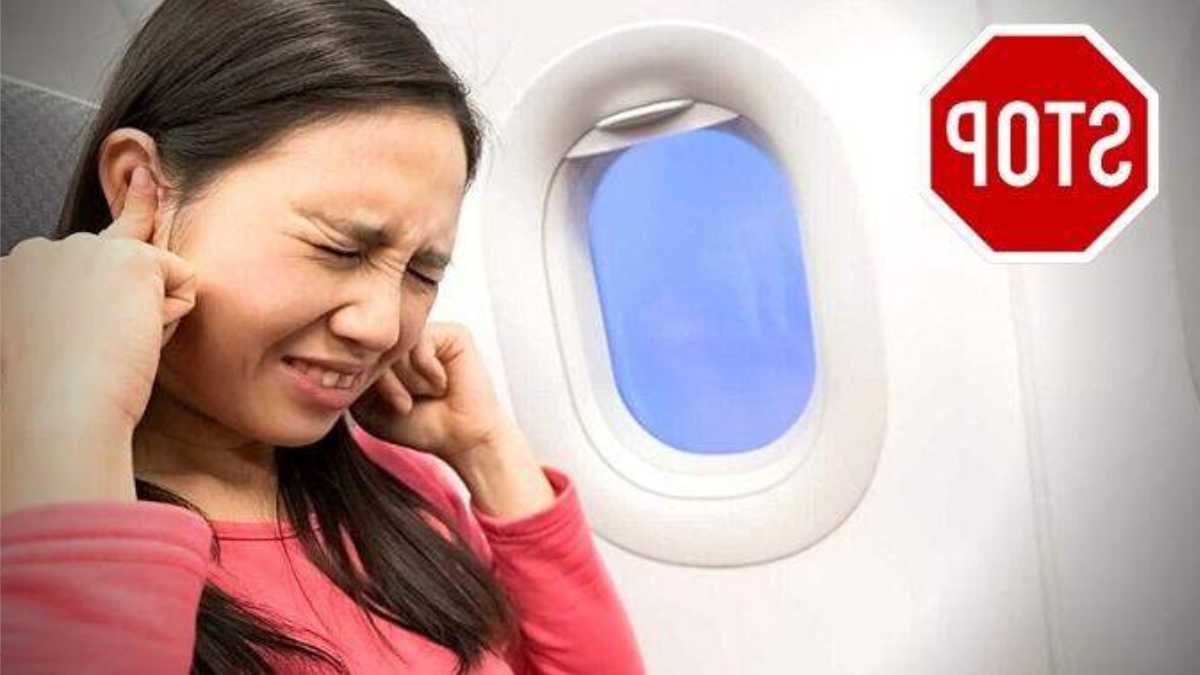You know that horrible sensation of blocked ears during air travel? It’s caused by changes in atmospheric pressure during take-off and landing. As a result, many people experience ear discomfort and pain. The problem is, it can ruin an entire flight, or worse: your trip. In fact, sometimes the ears remain blocked for several hours AFTER the flight… or even several days or even a week! To find out more, I spoke to my ENT specialist, Dr Mathey. And the good news: he recommended some easy solutions to rebalance middle ear pressure and quickly relieve ear pain on planes. Here are his 8 tips for unclogging your ears during or after a plane flight.
-
Pinch your nose with your thumb and forefinger
Keep your mouth closed. Blow gently through your nose, as if you were blowing your nose. Note: exhale gently and without force, to avoid damaging the eardrum. A little background information: The Valsalva maneuver is a technique used in scuba diving to equalize ear pressure. In effect, this simple gesture forces the opening of the Eustachian tube, which ventilates the middle ear. As a result, air passes into the middle ear, rebalancing pressure. This is what happens naturally when you yawn or swallow food, drink or saliva.
-
Toynbee maneuver
The Toynbee maneuver is another technique used in scuba diving to relieve the sensation of a blocked ear. Like the Valsalva maneuver, it rebalances air pressure between the outer and middle ear. The difference? When you pinch your nose, take a few sips of water at the same time. By swallowing liquid, the throat muscles create a pressure drop, forcing the Eustachian tubes to open.
-
Stay awake during take-off and landing
Do you tend to fall asleep as soon as you get on the plane? Then you should know that this increases the risk of earache. There’s no need to force yourself to stay awake for the duration of the flight. It’s all about not falling asleep during take-off and landing.
-
Chew gum
It’s a classic known to all frequent flyers: chewing gum. When you chew gum or suck on candy, you’re using your chewing muscles. On top of this, you swallow small quantities of saliva. This is often enough to open the Eustachian tubes and re-equilibrate ear pressure. Good to know: Chewing gum alone may not be enough to prevent severe ear pain when flying. In such cases, Dr Mathey recommends chewing gum.
-
Yawning and swallowing saliva
Another simple and effective way to rebalance ear pressure: during take-off and landing, yawn. And immediately afterwards, swallow your saliva several times in a row. If you can’t produce saliva, drink a liquid or swallow food in small quantities. In fact, the principle is exactly the same as when you chew gum. Yawning and swallowing activate the chewing muscles, forcing the Eustachian tubes to open.
-
Choose the right plane!
Dr. Mathey revealed something very surprising to me: Aircraft made of composite materials like the Boeing 787 and Airbus A350 have higher humidity levels than those made of traditional materials (aluminum). And as a result, they have lower cabin air pressure. So, if you have the choice of aircraft for your next air trip: opt for an Airbus A350 or a Boeing 787. Thanks to their lower cabin pressure, these are the best options for preventing ear pain.
-
Use earplugs
Dr Mathey also explained to me that there are hearing protectors to relieve ear pain when flying. These are earplugs specifically designed to gradually regulate the air pressure between the outside and the eardrum. These earplugs act as a filter, allowing the eardrum to gradually adapt to the pressure of altitude changes. You can easily find them in pharmacies, airport stores or on the Internet. But be careful… Even if you wear hearing protection during your plane trip: Don’t forget to yawn and swallow during take-off and landing!
-
Use a nasal decongestant
Special case: you have to fly, but you’re suffering from a cold, allergies or a respiratory infection. If you have such a problem, Dr Mathey advises you to avoid flying. And if it’s not possible for you to postpone your trip? Then use a nasal decongestant before and during the flight to unblock the Eustachian tubes. Experts recommend using a phenylephrine-based decongestant 30 to 60 min before the plane takes off and lands.



